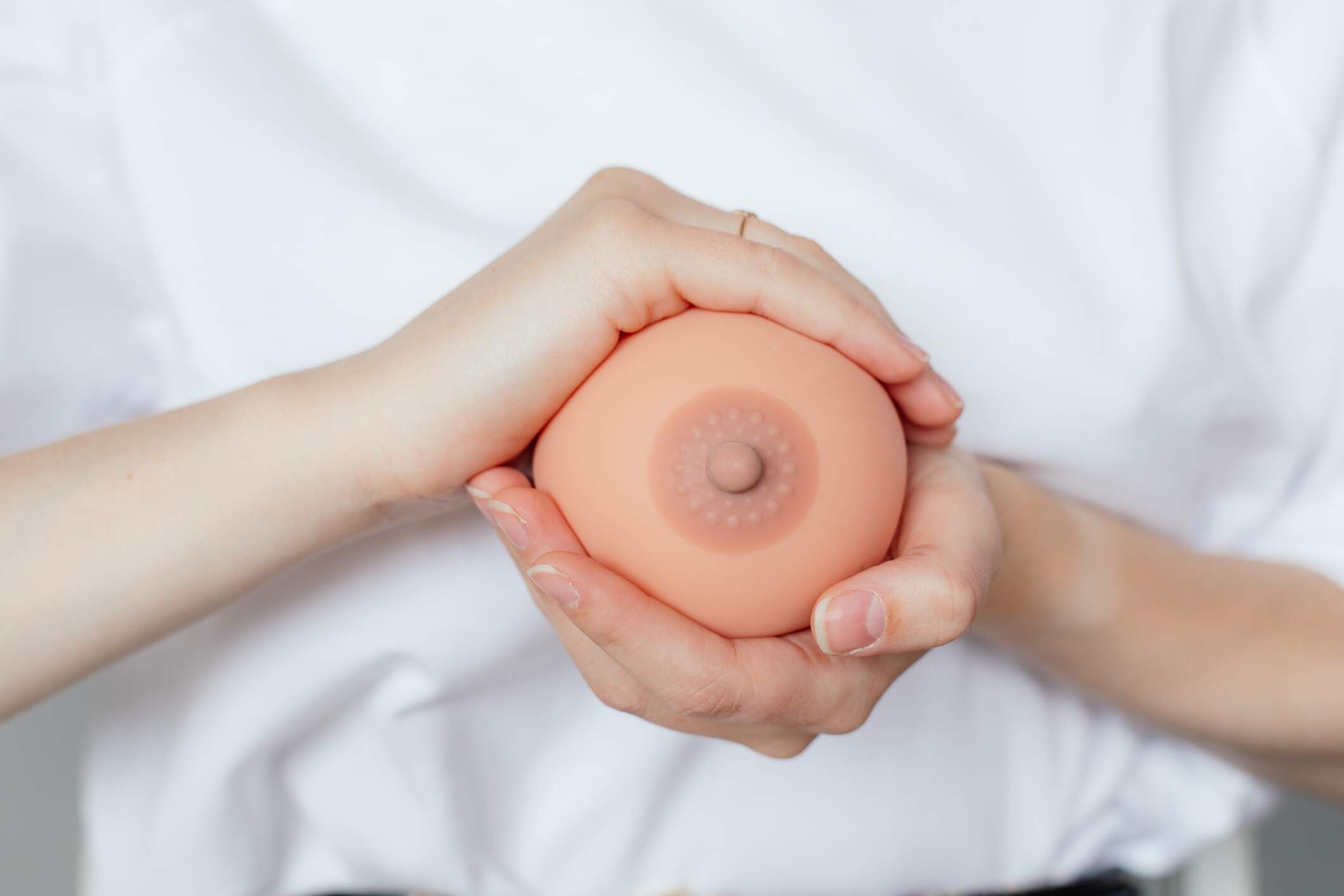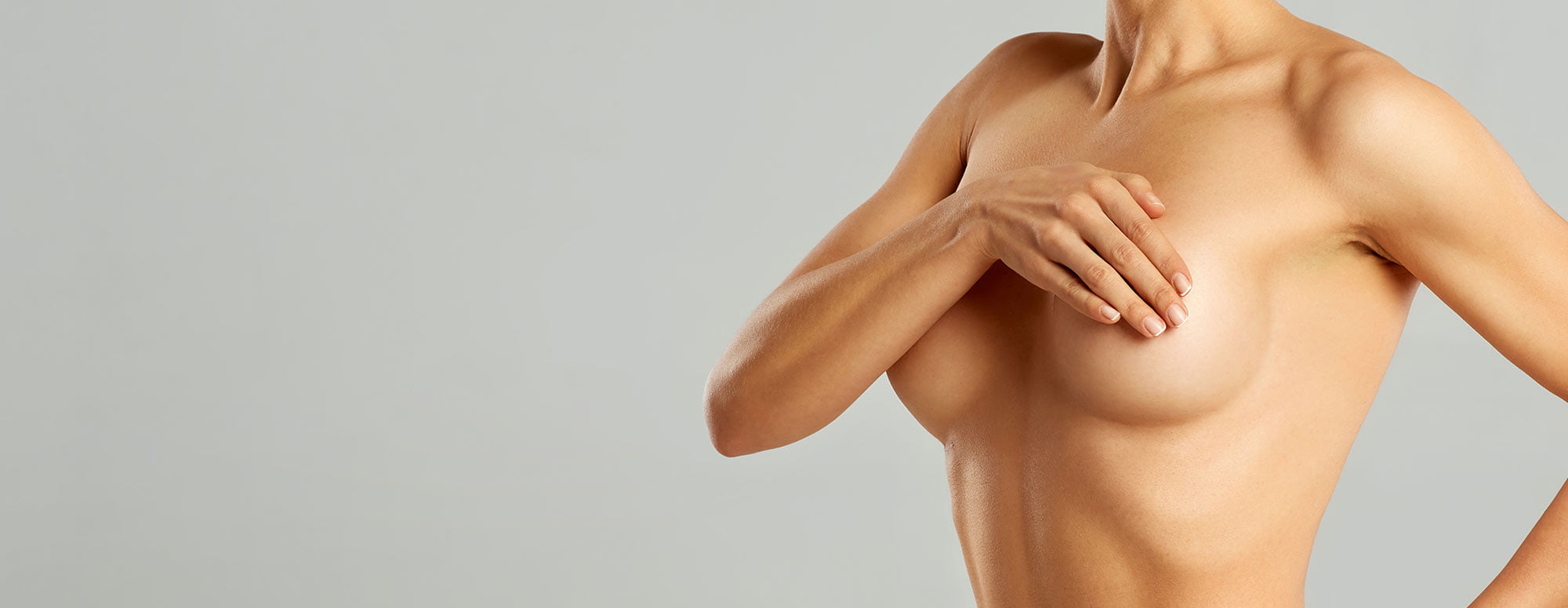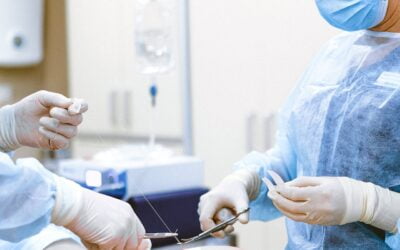Inverted nipples (also known as inverted nipples) are characterized by the nipples being pulled inwards towards the chest and is a phenomenon that can affect both men and women, but is most common in women.
This condition can be congenital or develop over time. It’s not just a cosmetic issue, but can also cause functional challenges, such as difficulties with breastfeeding.
In this article, we will go through what inverted nipples are, what causes them and how best to treat them. This way you can get the best possible overview of this condition and what treatment options you have.

With Dr. Inanna Weiss you feel in safe hands,’ says Mette Laursen, patient.
|
Aspect |
More details |
|
Definition |
Inverted nipples are when the nipples are pulled inwards towards the chest. |
|
Propagation |
Up to nine percent of women experience this condition. |
|
Treatment methods |
Available treatments include surgical procedures using microsurgical techniques. |
|
Cosmetic and medical reasons |
Treatment can be sought for both aesthetic reasons and to improve functional issues such as breastfeeding. |
What are inverted nipples?
Inverted nipples, which are flat or point inwards towards the areola, are found in both men and women. This condition can be congenital or acquired throughout life. Although inverted nipples are usually harmless, in some cases they can indicate more serious health problems. Sudden inversion of one or both nipples should be examined by a healthcare professional.
Causes of inverted nipples
This condition can be caused by short, strong collagen fibers under the skin pulling the nipple inwards. It’s quite a common phenomenon and up to nine percent of women may have one or both nipples inverted.
This condition can worsen with repeated pregnancies and may be associated with inflammatory conditions such as infections or other underlying breast diseases.
Here is an overview of some of the most common causes:
Congenital factors: Many people are born with inverted nipples due to tight milk ducts or insufficient connective tissue around the nipple. This is an innate characteristic and is often unchangeable without intervention.
Clogged milk ducts: Fluid build-up in the milk ducts can make the breasts tight and pull the nipples inwards. Conditions such as breast abscesses, mammary duct ectasia, and mastitis can block the milk ducts and contribute to the problem.
Pregnancy and breastfeeding: During and after pregnancy, the breasts can fill with milk, which can cause the nipples to flatten or retract. This is usually temporary and often resolves after breastfeeding ends.
Paget’s disease: This rare form of cancer that develops on the nipple skin may be accompanied by inverted nipples and is often mistaken for eczema. Symptoms include red, dry, crusty or flaky skin around the nipple, itching, burning sensation and abnormal discharge.
Breast injury or surgery: Damage to the milk ducts from breast fat necrosis, breast reduction surgery and nipple piercings can also cause inverted nipples.
Age and hormonal changes: As people age, their breasts can naturally change shape and become flatter or retracted. Especially during peri-menopause and menopause, shortening of the milk ducts can cause the nipples to retract inwards.

Classification of inverted nipples
Inverted nipples are classified into three degrees according to the degree of inversion:
Grade 1: The nipple can be easily pulled out and remains protruded.
Grade 2: The nipple is more difficult to pull out and tends to retract again.
Grade 3: The nipple is very difficult to pull out and immediately retracts, which can make breastfeeding very difficult or impossible.
Treatment of inverted nipples
Dr. Inanna Weiss specializes in the treatment of inverted nipples through a microsurgical technique involving the loosening of collagen fibers.
This is done through a small surgical procedure where an incision is made under the nipple. Microsurgery is used to release the fibers that pull the nipple inwards, and in some cases a small ring or other support structures can be inserted to ensure the nipple remains in the correct position after healing.
Detailed review of the surgical process
The surgery is typically performed under local anesthesia and the patient can often go home the same day. The procedure requires precise handling and the use of advanced surgical equipment to minimize the risk of nerve damage or loss of nipple sensitivity.
After surgery, the patient is instructed on how to care for the wound and follow-up visits are scheduled to ensure optimal healing.
If you are considering inverted nipple treatment, you can read more about the clinic’s treatment options here.

Long-term outcomes and patient satisfaction
Patients undergoing this treatment often report a marked improvement in both appearance and functionality of the nipples. Many experience an improved ability to breastfeed and increased confidence.
Long-term follow-up is important to assess the final effect of treatment and to ensure that the results are lasting and satisfactory.
Focus on follow-up and long-term care
After inverted nipple treatment, careful follow-up is essential to ensure healing progresses as planned and to achieve the best possible long-term results.
Dr. Inanna Weiss and her team ensure that all patients receive detailed wound care instructions, including recommendations for activities and the use of specific products to promote healing.
In addition, regular follow-up visits are recommended to assess the healing process and discuss any concerns the patient may have.
Complications and management of inverted nipples
Although the procedure to correct inverted nipples is generally safe, there are potential risks as with any surgical procedure. Complications can include infection, bleeding, and rarely loss of nipple sensitivity.
Dr. Weiss’s approach involves using advanced techniques to minimize these risks. Our clinic offers comprehensive support and guidance on how best to manage and prevent these potential complications.
The importance of individual consultation
Every patient’s situation is unique, which is why an individual consultation is essential. During the consultation, Dr. Weiss will assess the specific degree of inversion, discuss the patient’s medical history and personal expectations, and create a tailored treatment plan.
This step is critical to ensure the patient feels comfortable and informed about all aspects of the procedure, from start to finish.
How to treat inverted nipples
Inverted nipple treatment can be a transformative experience for many living with the condition. By choosing an experienced specialist like Dr. Inanna Weiss, patients are ensured not only expert treatment, but also a comprehensive approach to care that addresses both the physical and psychological aspects of their condition. This ensures the best chance of a satisfactory outcome and an overall improvement in quality of life.
If you are considering treatment for inverted nipples, you can contact us here.


